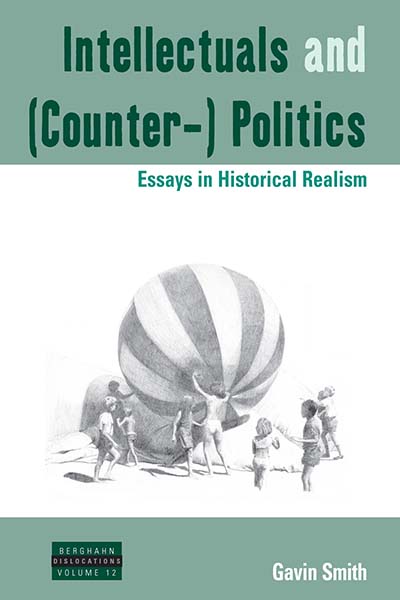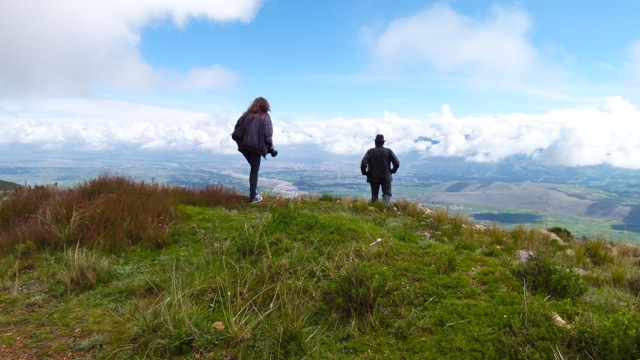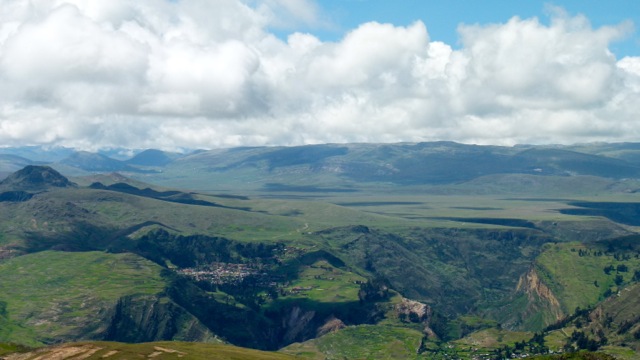 In Gavin Smith’s Intellectuals and (Counter-) Politics: Essays in Historical Realism, which was published earlier this month, the author takes a look at the role of the intellectual (specifically the social scientist) in three important areas — studying capitalism, making histories, and producing places. According to the author, “Reflexivity for the social scientist, Bourdieu argued, involves an objectivist ethnography of ethnographers,” a task Smith himself undertook in both Spain and Peru. Following, he reflects on his time spent conducting ethnographic research in Peru.
In Gavin Smith’s Intellectuals and (Counter-) Politics: Essays in Historical Realism, which was published earlier this month, the author takes a look at the role of the intellectual (specifically the social scientist) in three important areas — studying capitalism, making histories, and producing places. According to the author, “Reflexivity for the social scientist, Bourdieu argued, involves an objectivist ethnography of ethnographers,” a task Smith himself undertook in both Spain and Peru. Following, he reflects on his time spent conducting ethnographic research in Peru.
_______________________________
I love the picture below because it says so much to me (and perhaps only to me). These two people came into my life at such different times and in such different ways. They are irreplaceably dear to me but in entirely different ways too. And they seem to be moving off to see something I (the photographer) can’t see: one of them confident on the edge of the steep hill, using his shoulders and arms as he walks; the other more cautious, cutting a rather odd silhouette – at least in part because of the over-sized jacket she has just borrowed from me and partly because midway down the left side of her shape is the bulk of a professional’s camera lens.
If they are not both questioners (and I can’t answer that) they have each made me one, though again in such very different ways. I may never have seen Pedro again had it not been for Corin (who is my daughter). When she decided on her project for the Scottish pavilion at the Venice Biennale of 2013, it was well on forty years since I had begun sharing a house with him and we had begun our meddling and prodding into people’s lives in his home up there in the highlands. When she first suggested the return I thought it was a whim. And the idea made me shudder. You don’t always want to go back, as you get old. It’s not from any nameable worry. It’s from the uncertainty: the accidents, the losses, the sicknesses, even the disappearances. Bar the annual card at New Year’s, Pedro and my life had not touched for a quarter century.
In any event if it had been a whim it didn’t stay that way. I had tipped out some 300 slides from their out-dated boxes into plastic bags and she had carried them off to Glasgow where she lived, an ocean away from me. And bit by bit she must have begun to step on the uneven stones that give an artist the outset of an idea. So when she called and told me we were going in January, I felt that she was taking my shoulders and turning me to look in a way that I should, despite my reluctance.
In the days before we left it took some ingenuity and quite a few friends actual and erstwhile to find a lead to Pedro. But that’s how it turned out right the way through. The people who were there – in Lima, in Huancayo, in Huasicancha [the picture below] – were vividly, strikingly, exuberantly there. We recovered our shared moments, afraid that our excitement might be too rough for the delicacy of what we might touch upon. The people who were not there tumbled into shattered bits of stories, some with forewarning, some like a winded gasp of a blow to the stomach, some simply such blatant facts that I would not let myself accept them.
Pedro had been my co-enquirer then. What he, his friends and his family did was to write the puzzlement into my eyes from one day to the next, and then, seeing it reflected in my eyes they began to get a sense of a story I might tell some years later. Much of it was a story they already knew, but not as I told it. It has their imprint on it but, perforce, it has mine on it too. And now, looking at this picture, I can imagine Pedro looking out on a history that is still his and theirs, shaped a little by what he and they know that I know of it. There he is, looking away from me no doubt a glint in his eye, smiling, laughing even. Forty years is a long time to struggle but what he wanted Corin and me to know was that struggle they would. As they say in French, On resiste.
And that show in Venice. It edged a sharp blade into the complacency. The complacency that a story might be finished or even properly begun. The complacency that distance makes possible, the one that separates Venice from Huasicancha, the one that had once allowed me to box up those slides and put them away.
In the book I was writing when this photo was taken I have tried to ask what the point of questioning is, especially those who make a career out of it, people I gloss with the term ‘intellectuals’. Beginning with Pedro and those around him my questioning and theirs was closely tied to a kind of attitude to the complacency of the present that I call ‘counter-politics’. Now, when I see what Corin and those around her are doing with their work I see too that it is set against the complacency of the present and is a kind of counter-politics that I need to learn about. Because I think it will matter.
____________________________________
Gavin Smith is the author of Livelihood and Resistance: Peasants and the Politics of Land in Peru (1989); Confronting the Present: Towards a Politically Engaged Anthropology (1999); and, with Susana Narotzky, Immediate Struggles: People, Power and Place in Rural Spain (2006). He is Professor Emeritus in the Department of Anthropology at the University of Toronto.
Series: Volume 12, Dislocations


